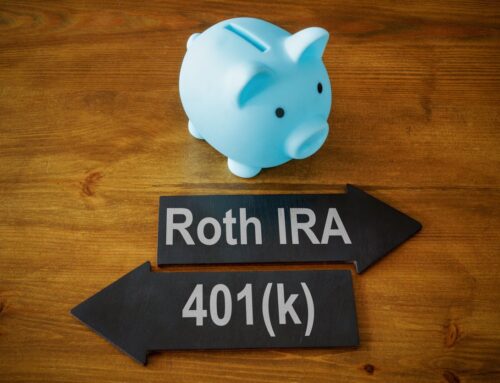
Once you’ve saved enough for retirement, the question becomes how you’ll make your savings last for the rest of your life. Higher costs make this difficult, and we’ve been seeing higher costs as a result of inflation for some months. It’s important to know how inflation can erode your savings over time and how to create a plan to address this.
We Could See “Persistently Higher Inflation”
Federal Reserve Chairman Jerome Powell said last year that “the threat of persistently higher inflation has grown,” and we have continued to see inflation in 2022. Product shortages and labor shortages have also factored into the inflation we have seen, plus gas prices are the highest they’ve been in the last seven years and are up 50% over the past year alone. In December, 49% of small businesses said they planned to raise prices in the next three months, according to the National Federation of Independent Business.[1]
Could Higher Inflation Mean Paying More in Taxes?
The tax code can change, as can other things that could affect how much you pay in taxes, including inflation: The $3,000 limit on capital loss deductions hasn’t increased since 1978 and isn’t likely to in the near future. Due to inflation over time, this deduction is effectively worth less than it once was. Similarly, the $250,000 starting point for an investment surtax isn’t indexed for inflation. Since capital gains are calculated without any adjustment of the purchase price for the cost of living, consider the impact of inflation on your net profit if you hold an asset for decades.
Then there are taxes on your Social Security benefit: If your combined income as an individual is over $34,000 or over $44,000 as a married couple filing jointly, up to 85% of your Social Security benefit may be taxable.[2] These income thresholds have not increased since they were first instituted in 1984, and there are no current plans to adjust them with inflation.[3]
What Does Today’s Inflation Mean for You Tomorrow?
Year-over-year inflation was 7.5% in January, 7% in December, and 6.8% in November.[4] Over time, inflation can have significant effects, especially on those living off of our savings. The buying power of $100 in 1960 is now equal to the buying power of $11.[5] Is your nest egg protected? After 10 years with 5% inflation, $1,000,000 would be worth $613,913.
[2] https://www.ssa.gov/planners/taxes.html
[3] https://www.ssa.gov/policy/docs/issuepapers/ip2015-02.html
[4] https://www.investopedia.com/inflation-continues-rapid-rise-in-january-2022-5218700#:~:text=In%20January%202022%2C%20inflation%2C%20as,major%20contributors%20to%20overall%20inflation.
[5] https://westegg.com/inflation/infl.cgi?money=100&first=1960&final=2020
The commentary on this blog reflects the personal opinions, viewpoints, and analyses of BML Wealth Management’s employees providing such comments and should not be regarded as a description of advisory services provided by West Wealth Group, LLC. The views reflected in the commentary are subject to change at any time without notice. Nothing on this blog constitutes investment advice. Any mention of a particular security and related performance data is not a recommendation to buy or sell that security. Investing involves risk, including the potential loss of principal. No investment strategy can guarantee a profit or protect against loss in periods of declining values. Past performance is no guarantee of future returns.
Investment advisory services through West Wealth Group, LLC, an SEC Registered Investment Adviser. BML Wealth Management and West Wealth Group, LLC are affiliated entities. Insurance Services are offered through BML Wealth & Insurance Services, California Insurance License #0M15550.
We do not provide tax or legal advice, all individuals are encouraged to seek guidance from qualified professionals regarding their personal situation. Any references to protection benefits or steady and reliable income streams in this guide refer only to fixed insurance products. They do not refer, in any way, to securities or investment advisory products.






